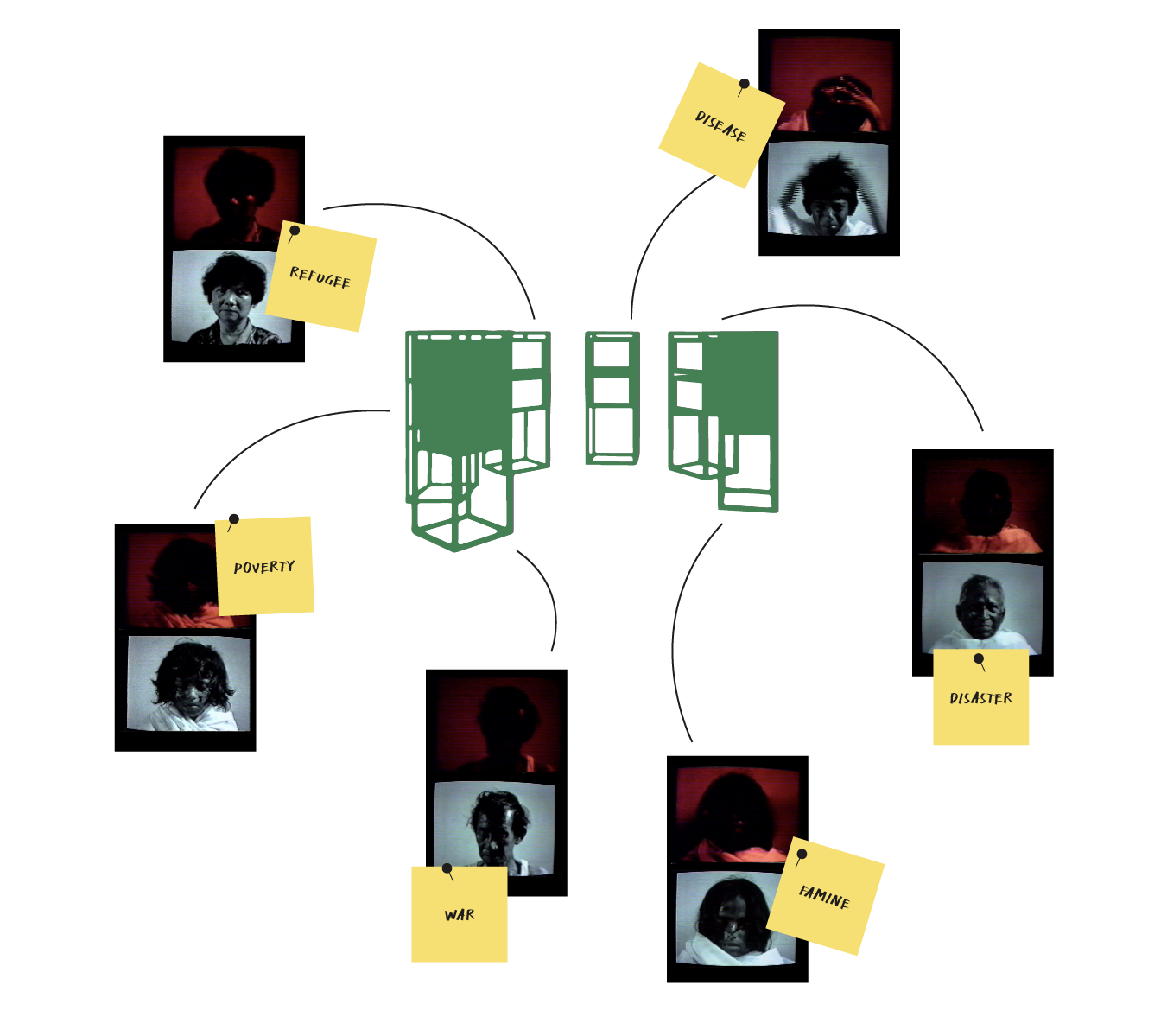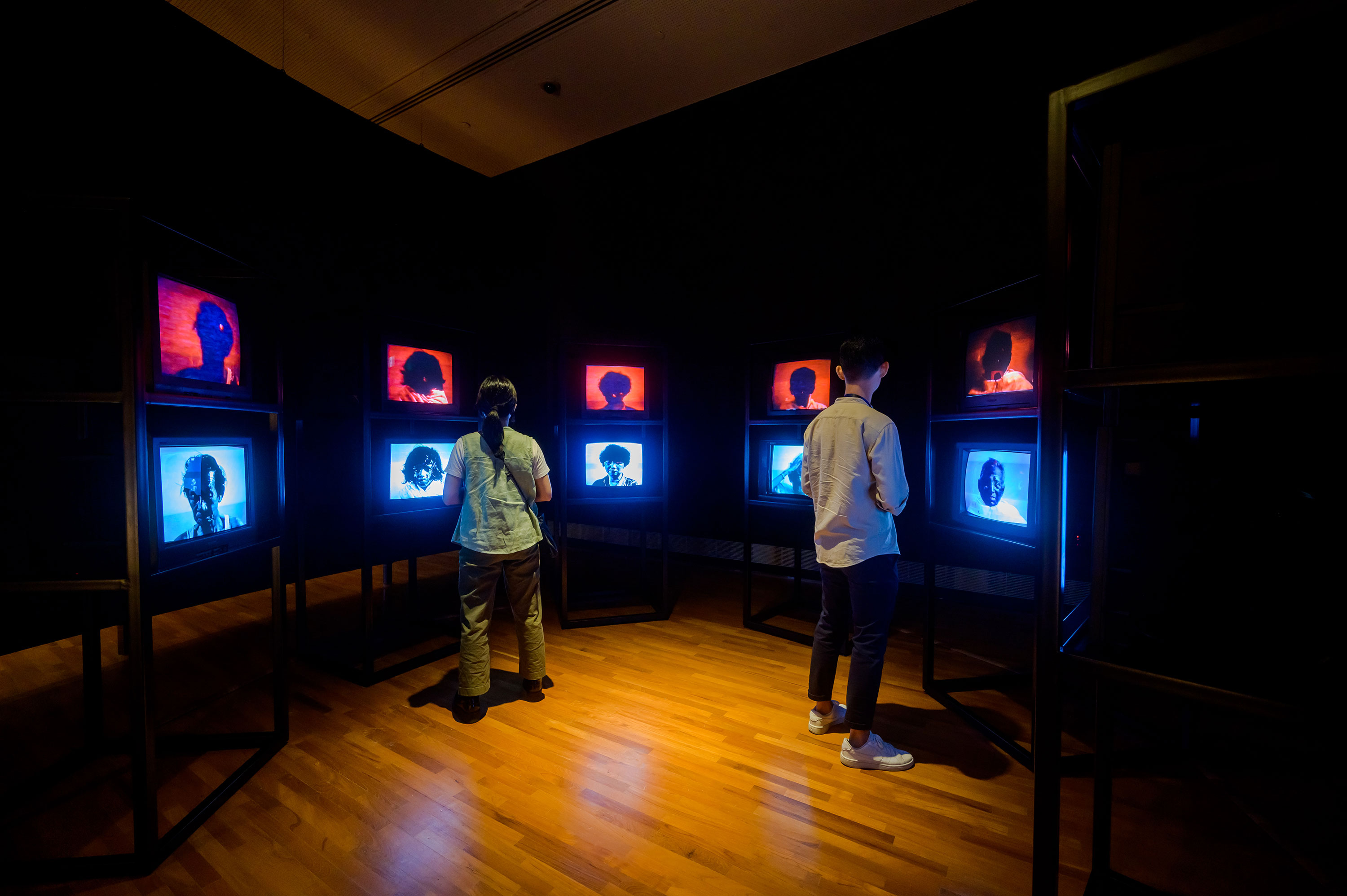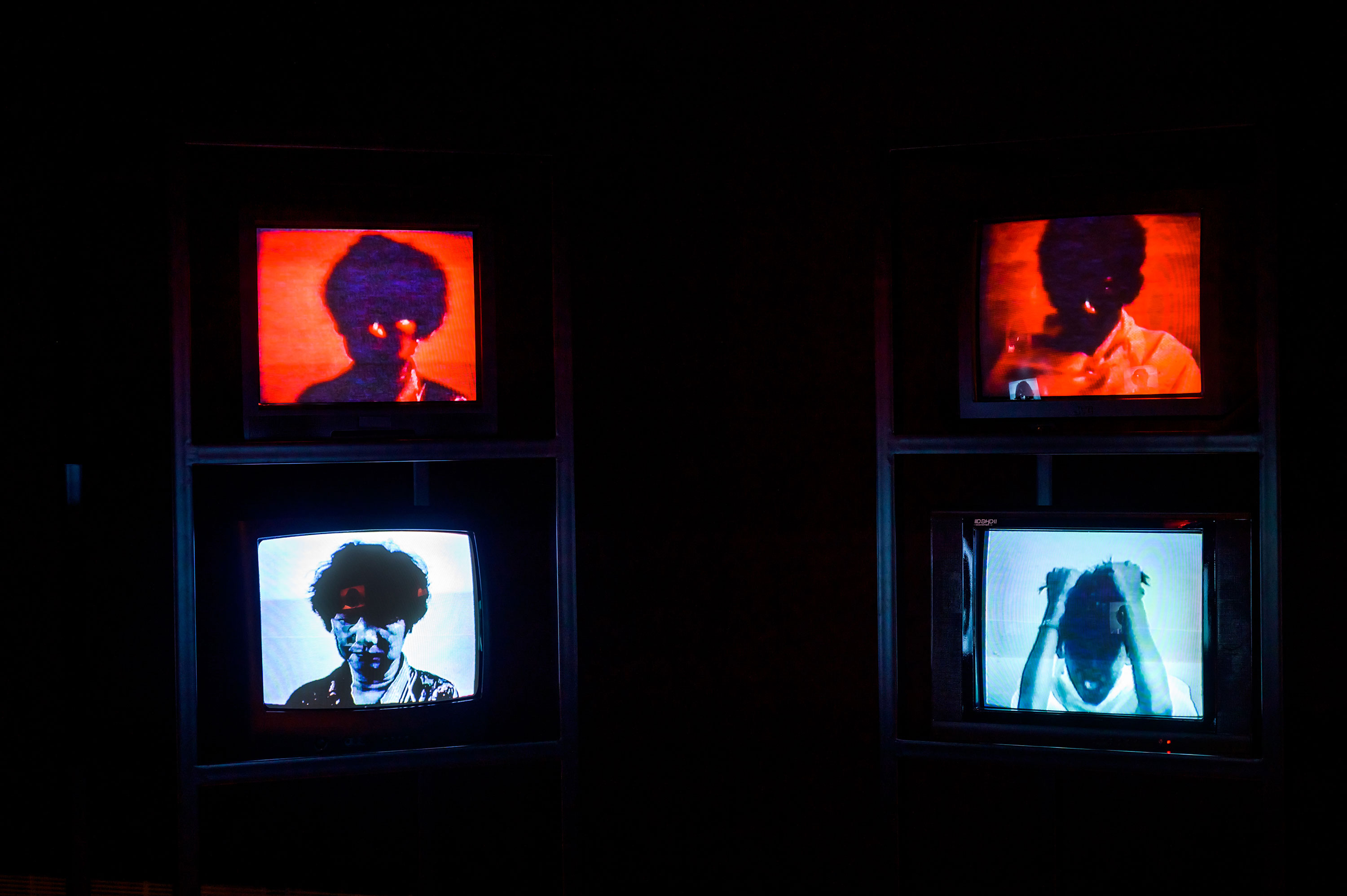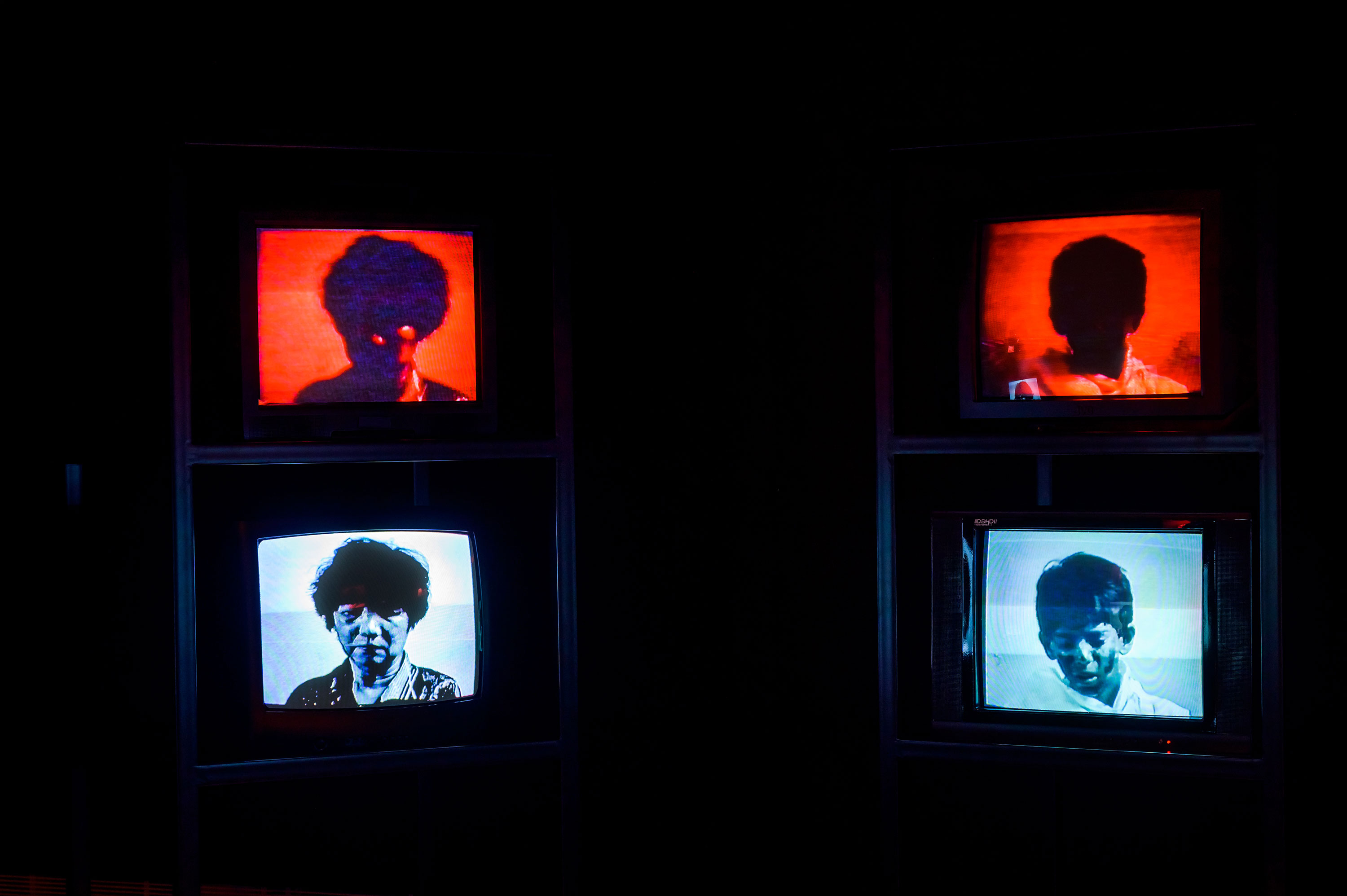
Chng Nai Wee created Sin of Apathy to question the condition of Singaporean society
and confront the problem of indifference.
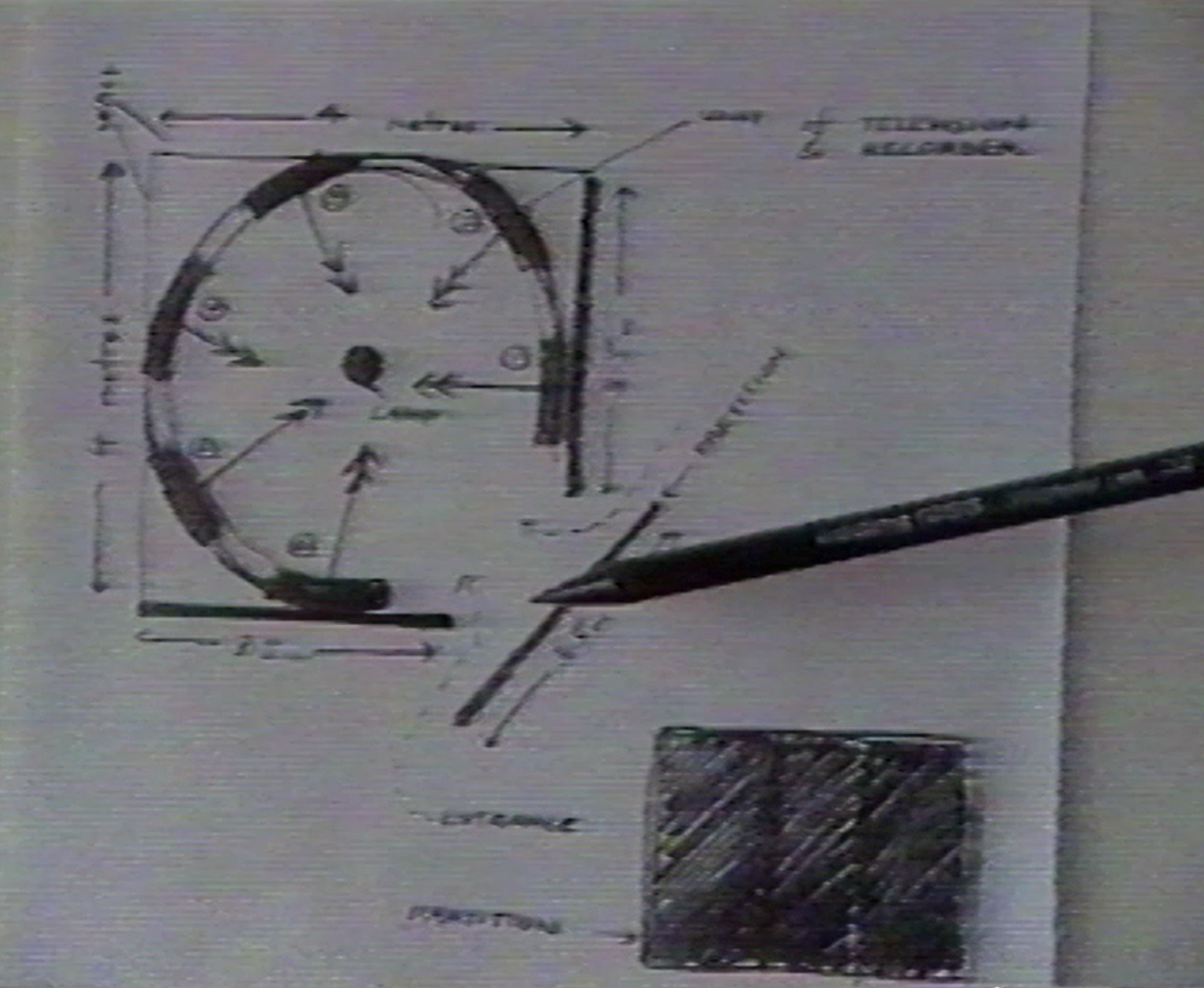
Chng Nai Wee’s hand-drawn sketch
illustrates the arrangement of six columns from the top view. A pencil is used as a pointer.
Still from Chng Nai Wee’s instructional video for the installation of Sin of Apathy in
1991.
About the Artwork
Sin of Apathy
1991, digitised 2023
12 cathode-ray tube televisions, 12 media players, video
Video: VHS transferred to digital video, 12 channels, each 4:3 aspect ratio, colour and sound (stereo), varying durations
Collection of the artist
Chng felt that society had become more inward-looking; people had a blinkered focus on
material wealth and were less engaged with world affairs. The six figures featured in the
artwork embody six forms of crises in society: War, Disease, Poverty, Famine, Disaster and
Refugee.
From time to time, these figures make melancholic utterances, behoving audiences to
care about the plight of those less fortunate.
Sin of Apathy is exhibited in a darkened space as Chng wants the viewer to be
enveloped within a cacophonous field of both monochromatic and coloured screens. The
cathode-ray tube (CRT) televisions also give the work considerable physical presence. By
enclosing the viewer with 12 television monitors, the artist prompts viewers to focus on
their individual capacity to receive and process information.
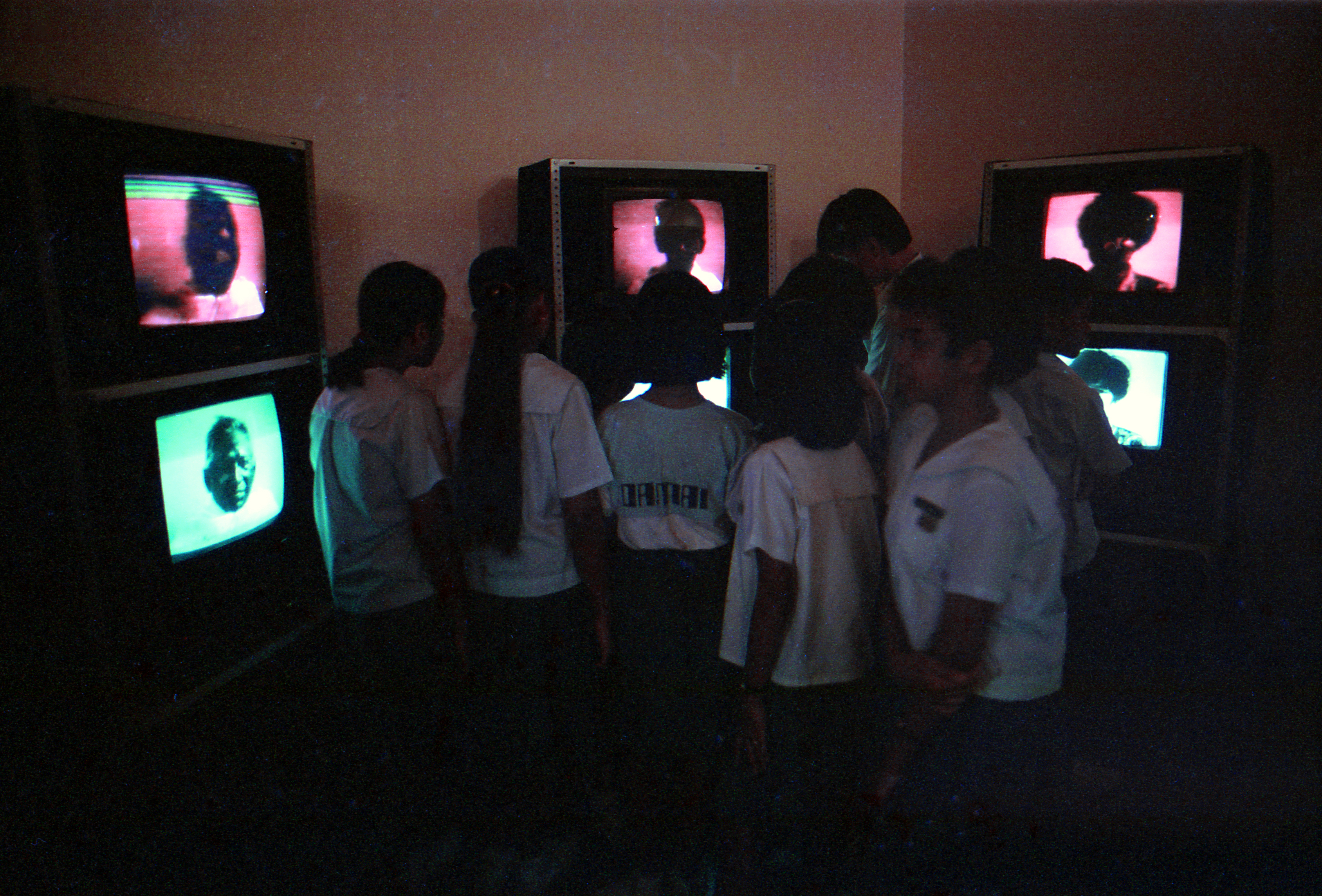
Chng Nai Wee. Sin of Apathy. 1991. Installation view, National Sculpture Exhibition, 1991. Image courtesy of Koh Nguang How.

Chng Nai Wee. Still from Sin of Apathy. 1991.
One of the earliest multi-channel video works made in Singapore, Sin of Apathy was conceptualised by Chng in response to an open call for artwork entries to the 1991 National Sculpture Exhibition. A newspaper review of the exhibition, published in The Straits Times on 29 November 1991, described the artwork in some detail. Boldly titled “But it IS art”—like an emphatic response to a dismissive art viewer—the article was a clear statement that new media artworks like Sin of Apathy should be welcomed into the fold of visual arts, precisely because they seemed to lie outside the conventional definitions of sculpture in Singapore at the time and had new things to say. Perhaps the work’s inclusion in the exhibition is a nod to the undeniably bulky and hefty form of the typical consumer television set during the 1990s, which could be seen as a sculpture in its own right.
Sin of Apathy is exhibited in a darkened space as Chng wants the viewer to be enveloped within a cacophonous field of both monochromatic and coloured screens.
The artwork was assembled for the exhibition with reference to a tape recording and handwritten instructions that the artist had left for his friend and the artist’s sister, as Chng had to return to Dublin, Ireland to continue his medical undergraduate studies before the work was due to be installed.
Sin of Apathy marked the beginning of a long-standing engagement with technology for Chng from the 1990s onward. He made another video installation titled Where Do You Go When You Close Your Eyes in 1992 and published several of his digitally coded artworks on his website, biotechnics.org, which was one of the earliest web directories built for artists in Singapore.
About the Artist
Chng Nai Wee (b. 1969, Singapore), a practising ophthalmology surgeon, is also an artist. Chng’s works are multidisciplinary, often synthesising art and medicine, and made with a range of mediums and approaches, from mixed-media painting to installations. He received part-time training at the Nanyang Academy of Fine Arts, Singapore and graduated from the Royal College of Surgeons in Ireland. He has received the Dr Tan Tsze Chor Art Award, the National Arts Council’s Young Artist Award, and Honorable Mentions at the Singapore Art Awards.
 Image courtesy of Kong Yin Ying.
Image courtesy of Kong Yin Ying.Installation View
Discover More Details
Each of the six columns refers to a form of crisis in society, including War, Disease, Poverty, Famine, Disaster and Refugee.
